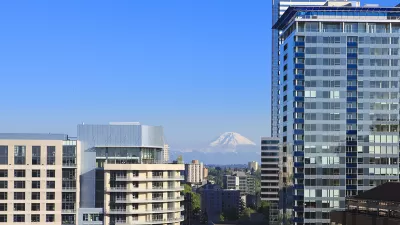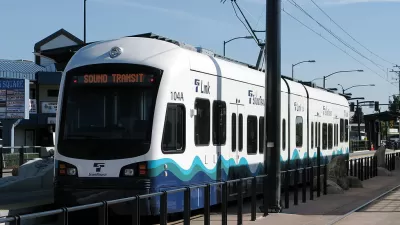Over ten percent of housing units in Seattle are single-room units, a new high and the result of a shift in housing costs and trends in recent years.

New Census data show that for the first time over 10 percent of Seattle housing units have just one room. The number of units has increased 80 percent since 2010, when there were more nine-room units than single-room ones.
Seattle is now more similar to San Francisco, the only other large U.S. city with a share of one-room units above the 10 percent mark. What is happening in these cities with these smaller units is not the norm across the country, says Gene Balk:
They are much rarer in a lot of other cities, particularly places where most people live in houses and rents aren’t anywhere near as high as Seattle. At the other end of the spectrum from San Francisco and us is Virginia Beach, Virginia — only about one in 100 housing units are one room.
While many of these units are studios, Balk notes that micro-units, generally smaller than 400 square feet, have been springing up around the city. Because the units are smaller, the rents tend to be more affordable, particularly in costlier neighborhoods.
Three-quarters of these one-room units are rentals, and Balk acknowledges they do have their place in Seattle’s expensive housing market. “Living in a single room can’t be the solution to Seattle’s high rents for everyone. It certainly isn’t suitable for a family, or even a couple. But for a young, single person, it can work out well. And in Seattle, there are a lot of them,” says Balk.
FULL STORY: One in 10 Seattle homes has just one room for first time ever

Planetizen Federal Action Tracker
A weekly monitor of how Trump’s orders and actions are impacting planners and planning in America.

Maui's Vacation Rental Debate Turns Ugly
Verbal attacks, misinformation campaigns and fistfights plague a high-stakes debate to convert thousands of vacation rentals into long-term housing.

Restaurant Patios Were a Pandemic Win — Why Were They so Hard to Keep?
Social distancing requirements and changes in travel patterns prompted cities to pilot new uses for street and sidewalk space. Then it got complicated.

In California Battle of Housing vs. Environment, Housing Just Won
A new state law significantly limits the power of CEQA, an environmental review law that served as a powerful tool for blocking new development.

Boulder Eliminates Parking Minimums Citywide
Officials estimate the cost of building a single underground parking space at up to $100,000.

Orange County, Florida Adopts Largest US “Sprawl Repair” Code
The ‘Orange Code’ seeks to rectify decades of sprawl-inducing, car-oriented development.
Urban Design for Planners 1: Software Tools
This six-course series explores essential urban design concepts using open source software and equips planners with the tools they need to participate fully in the urban design process.
Planning for Universal Design
Learn the tools for implementing Universal Design in planning regulations.
Heyer Gruel & Associates PA
JM Goldson LLC
Custer County Colorado
City of Camden Redevelopment Agency
City of Astoria
Transportation Research & Education Center (TREC) at Portland State University
Jefferson Parish Government
Camden Redevelopment Agency
City of Claremont





























